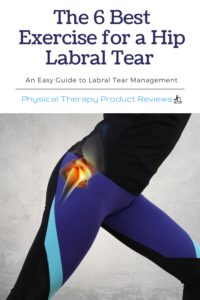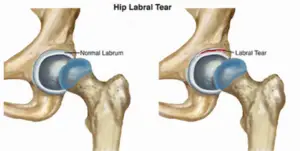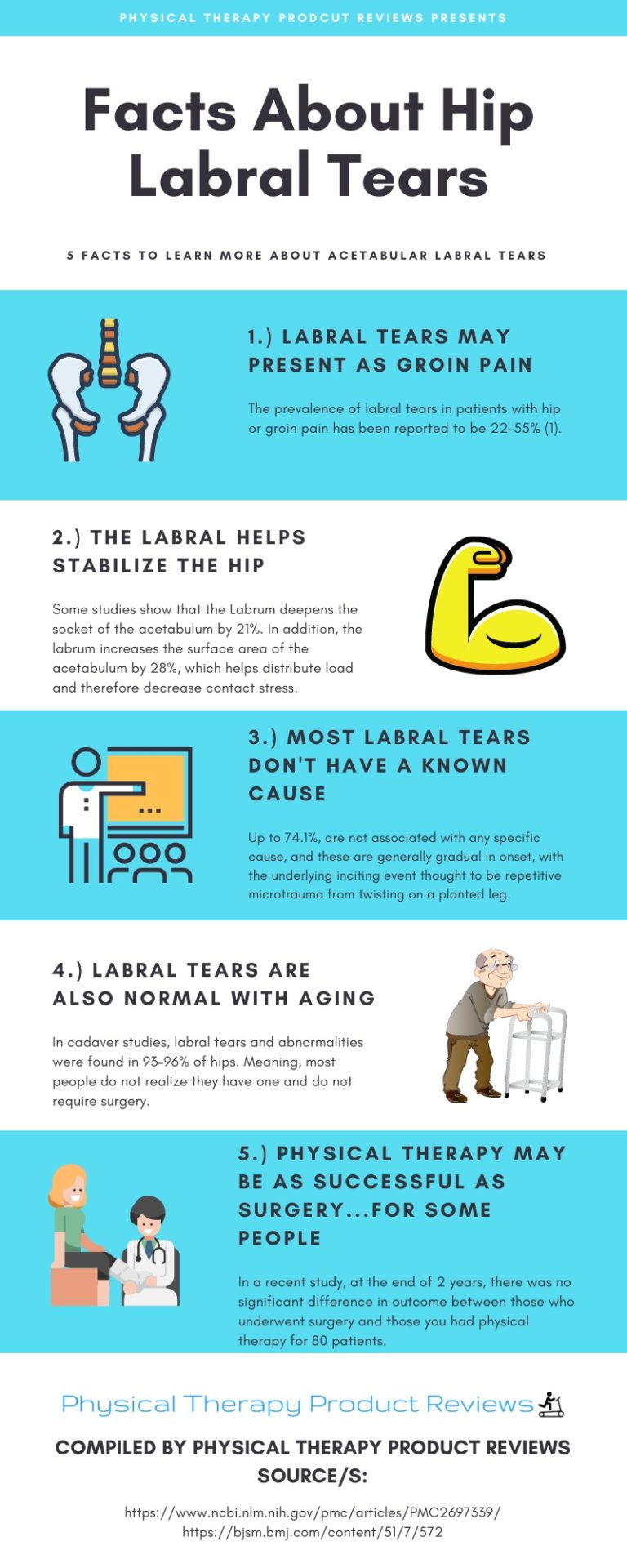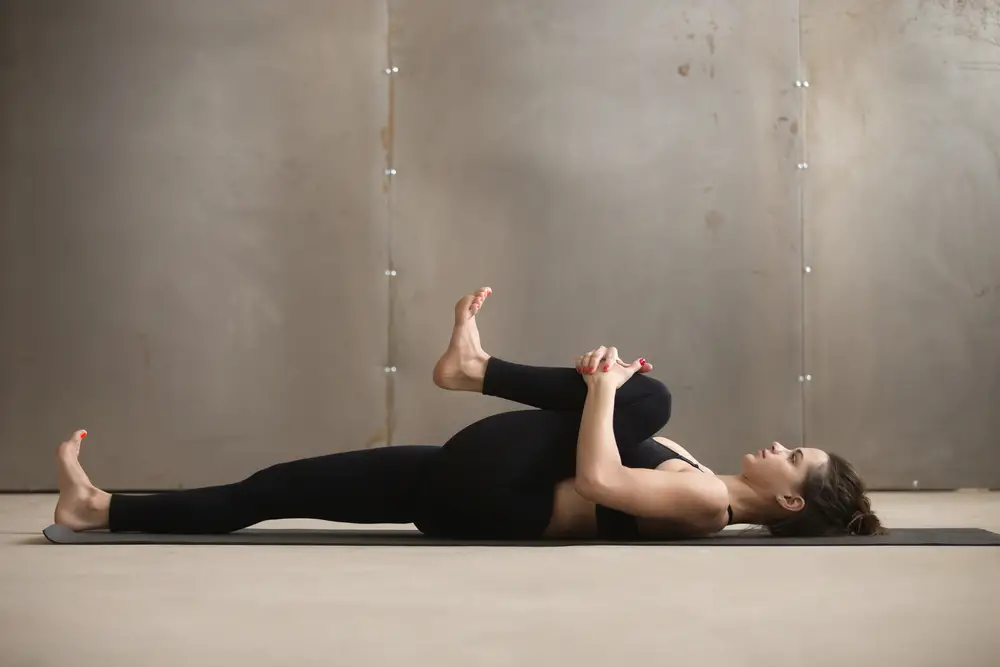 The hip is the strongest joint in the human body, yet not immune to injury or dysfunction. A complex intertwining of dense ligaments and cartilage, this structure is responsible for holding up your body’s weight and providing valuable feedback to your brain about balance and movement. Injuries to the hip joint can occur in a variety of ways, including trauma, anatomical variances, degeneration, and muscular imbalance. One of the most common hip injuries is a labral tear, observed in athletes and nonactive people alike.
The hip is the strongest joint in the human body, yet not immune to injury or dysfunction. A complex intertwining of dense ligaments and cartilage, this structure is responsible for holding up your body’s weight and providing valuable feedback to your brain about balance and movement. Injuries to the hip joint can occur in a variety of ways, including trauma, anatomical variances, degeneration, and muscular imbalance. One of the most common hip injuries is a labral tear, observed in athletes and nonactive people alike.
The pain resulting from a labral tear can vary across the spectrum, from being painless to quite debilitating. When symptoms begin to affect daily activities – such as climbing stairs, walking, or exercise, it’s a good time to explore options to alleviate the pain. Exercise therapy is often the initial prescription and can be the best way to manage the symptoms associated with labral tears, thus avoiding surgery and returning a patient to prior function.
What is a Hip Labral Tear?
 Labral tears occur at a structure located in the hip joint known as the labrum. The hip is a large ball and socket joint, composed of the pelvic bone and the femur. The labrum is a thick band of cartilage that rims the hip socket of the pelvic bone, deepening the joint and providing stability and structure. Important functions of the hip socket and labrum include shock absorption, stabilization, and strength. A tear can develop at any point along the donut of cartilage, most commonly in the front.
Labral tears occur at a structure located in the hip joint known as the labrum. The hip is a large ball and socket joint, composed of the pelvic bone and the femur. The labrum is a thick band of cartilage that rims the hip socket of the pelvic bone, deepening the joint and providing stability and structure. Important functions of the hip socket and labrum include shock absorption, stabilization, and strength. A tear can develop at any point along the donut of cartilage, most commonly in the front.
The degree of tear can vary from slight fraying to a fully displaced fragment. Historically, labral tears were often misdiagnosed. Due to the prevalence of advanced imaging, it is becoming apparent that labral tears comprise a large portion of patients suffering from hip pain. Though imaging is needed to absolutely confirm the presence of a labral tear, it is by no means necessary in order to begin non-invasive treatment such as exercise therapy.
What are the Symptoms of a Labral Tear?
Symptoms associated with a labral tear span a vast range and can include anything from sharp or dull pain to numbness and tingling. The most common complaint is pain to the front of the hip. This pain can sometimes cause a feeling of weakness when lifting the leg, making it difficult to balance or perform single-leg activities like climbing stairs, walking, or running.
Other common symptoms of a labral tear include:
- Sharp pain in the front of the hip when lifting the leg
- Pain when rotating the leg
- Deep ache in the hip or buttock
- Locking or clicking in the hip
- Groin or thigh pain
- Pain or numbness radiating to the outside of the thigh and knee
Causes of a Hip Labral Tear?
There are a variety of causes that can contribute to a labral injury, including trauma from a fall or motor vehicle accident, pinching in the hip between the pelvic bone and femur, and excessive force on the joint.
One common mechanism of injury for a hip labral tear is an overwhelming rotational force.
This typically occurs in athletes that perform repetitive motions such as kicking, jumping, or even a golf swing. Injury can occur acutely or across a long span of time in a degenerative fashion. Muscular imbalances can also be a culprit in the development of labral tears. Often, weakness is present in the gluteal muscles, and over time these imbalances can lead to improper load distribution on the hip joint and labrum.
Those most at risk for developing labral tears are athletes, elders, and overweight or obese patients. Athletes are subject to traumatic sports injuries and repetitive microtrauma, thus increasing their susceptibility to hip injuries. Elders are at risk due to developing weaknesses and degeneration that occurs in the strong tissues that make up the hip joint. People that are overweight or obese place excess load and stress on the hip joints, which can expedite degeneration and overload the hip structure.
Common Facts About Acetabular Labral Tear

The Best Exercises to Help with Hip Pain from a Labral Tear
Hip Flexor Stretch
Place your left knee on the ground in a kneeling position – use a small pillow under your knee for comfort. Your shoulders, hips, and bottom knee should be aligned. Gently shift your weight forward, bringing your hips in front of your left knee and bending into your front leg. You should feel a stretch in the front of your left hip. Hold for about 30 seconds and repeat a few times.
Figure-4 Stretch
Laying down on your back with your feet on the floor, hip-distance apart, cross one ankle over your opposite knee. You may already feel a stretch in the back of the hip in this position. For a deeper stretch, reach behind your thigh that has the ankle on top and gently pull it towards your chest. You can also use a strap or belt to help you reach behind your leg. Hold for about 30 seconds and repeat a few times.
Back Bridge
Lay on your back, placing your feet on the ground about hip-distance apart. Draw your belly button in towards your spine and contract your glutes, lifting your bottom from the floor until your hips are in line with your shoulders and knees. Do not allow your knees to splay out to the sides. Hold for a few seconds, then lower with control.
To get more from these exercises we recommend using a mini resistance band.
Clam Shell
Lay on your side with your hips and knees bent slightly in a comfortable position. Your knees should be stacked on top of each other. Keeping your feet touching, lift your top knee up, as if your legs were an opening clamshell. You should feel your muscle working on the outside of your hip. Hold for a few seconds, then slowly lower.
Side-Lying Leg Lift
Lying on your side with your body in a straight line, lift your top leg up a few feet, being sure to keep your toes pointed straight ahead. Make sure your hips stay stacked on top of each other and don’t roll out to the side. To progress this exercise, place a resistance band around your knees or ankles.
Bulgarian Split Squat
This is not only a great exercise for labral tears but for any lower extremity injury that you might have. Start by standing in front of a step and taking a bid step forward. Lift and rest the back leg on the step or elevated surface. Lower yourself down into a lunge position towards the floor and then raise yourself back up. This exercises causes the stand leg hip to work many important muscles.
Other Tips to Reduce Back Pain With a Labral Tear
Outside of exercise, there are some other modifications you can try to decrease hip pain. Some of these include;
- Avoid positions of impingement or aggravation such as sitting
- Be cautious of rotation and being planted on one
- Maintain strong glutes and posterior hip structures
- Reduce overall obesity and weight to decrease stress on your spine
FAQ for Hip Pain from a Labral Tear
Should I Wear a Hip Brace for a Labral Tear
For the most part, a hip brace will not likely make a difference but it’s always worth a shot. You may get just as much relief from a compression brace or compression shorts that aren’t as restrictive. Check out the Roxofit Hip Brace if you want to try one.
Can I Play Sports with a Labral Tear?
Does a Labral Tear Require Surgery?
Definitely not required. There are a large number of people who have a labral tear and don’t even know it and their hip just aches from time to time. With that being said, there are some people that will require surgery to fix it based on the size, location on the Acetabulum, and aggravating sport.
In Review
Hip labral tears are a common injury that can occur in nearly anyone. Though painful and sometimes very limiting, the best initial treatment is a conservative, non-operative approach. Often, Physical Therapy can drastically reduce symptoms and prevent surgery altogether. The right exercises and stretches can return you to your previous level of activity with a stronger and more competent body.
Works Referenced:
Enseki K, et al. Clinical Practice Guidelines for Nonarthritic Hip Joint Pain. Journal of Orthopedic and Sports Physical Therapy. 2014; 44(6): A1-A32. https://www.jospt.org/doi/pdf/10.2519/jospt.2014.0302
Groh MM, Herrera J. A Comprehensive Review of Labral Tears. Current Reviews in Musculoskeletal Medicine. 2009; 2: 105-117. https://www.ncbi.nlm.nih.gov/pmc/articles/PMC2697339/pdf/12178_2009_Article_9052.pdf
Disclaimer: The information provided in this post is for educational purposes only. This is not a substitute for a medical appointment. Please refer to your physician before starting any exercise program.

